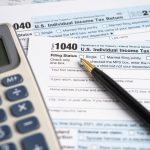Ten new stocks made the Most Attractive list this month, while three new stocks joined the Most Dangerous list.
June Performance Recap
The best performing large cap stock gained 10% and the best performing small cap stock was up 17%.
The best performing large cap short stock fell by 8% and the best performing small cap short stock fell by 26%.
The Most Attractive stocks have high and rising returns on invested capital (ROIC) and low price to economic book value ratios. Most Dangerous stocks have misleading earnings and long growth appreciation periods implied by their market valuations.
Most Attractive Stocks Feature for July: Ford Motor Company
Ford Motor Company (F) is the featured stock from July’s Most Attractive Stocks Model Portfolio.
Ford has grown revenue and net operating profit after tax (NOPAT) by 2% and 4% compounded annually since 2013, respectively. Ford’s NOPAT margin increased from 5% in 2013 to 6% in the TTM and invested capital turns rose from 1.8 to 2.1 over the same time. Rising NOPAT margins and invested capital turns drive Ford’s return on invested capital (ROIC) from 9% in 2013 to 12% in the TTM.
Figure 1: Ford’s Revenue and NOPAT Since 2013
Ford Is Undervalued
At its current price of $13/share, F has a price-to-economic book value (PEBV) ratio of 0.6. This ratio means the market expects Ford’s NOPAT to permanently decline by 40%. This expectation seems overly pessimistic for a company that has grown NOPAT by 4% compounded annually since 2013 and 20% compounded annually since 2018.
Even if Ford’s NOPAT margin falls to 4% (below TTM NOPAT margin of 6%) and the company’s revenue grows just 1% (below 10-year compound annual growth rate of 2%) compounded annually through 2033, the stock would be worth $16/share today – a 23% upside. In this scenario, Ford’s NOPAT falls 1% compounded annually through 2033. Should Ford grow profits more in line with historical levels, the stock has even more upside.
Critical Details Found in Financial Filings by My Firm’s Robo-Analyst Technology
Below are specifics on the adjustments I made based on Robo-Analyst findings in Ford’s 10-Qs and 10-Ks:
Income Statement: I made $7.4 billion in adjustments, with a net effect of removing over $2 billion in non-operating expense.
Balance Sheet: I made $75.9 billion in adjustments to calculate invested capital with a net increase of $1.4 billion. One of the most notable adjustments was several billion in asset write downs.
Valuation: I made $46.2 billion in adjustments to shareholder value with a net decrease of $14.2 billion. The most notable adjustment was for the overfunded pension.
Most Dangerous Stocks Feature: Cadence Bank (CADE)
Cadence Bank (CADE) is the featured stock from July’s Most Dangerous Stocks Model Portfolio.
Cadence Bank’s NOPAT margin fell from 24% in 2018 to 3% in the TTM while the company’s invested capital turns remained the same at 0.3 over the same time. Falling NOPAT margins drive Cadence Bank’s ROIC from 7% in 2018 to 1% in the TTM.
Cadence Bank’s economic earnings, the true cash flows of the business, which take into account changes to the balance sheet, have fallen from -$16 million in 2018 to -$584 million in the TTM. Meanwhile, the company’s GAAP net income has risen from $221 million to $573 million over the same time. Whenever GAAP earnings rise while economic earnings decline, investors should take note.
Figure 2: Cadence Bank’s Economic vs GAAP Earnings Since 2018
CADE Provides Poor Risk/Reward
Despite its poor and declining fundamentals, Cadence Bank’s stock is priced for significant profit growth, and I believe the stock is overvalued.
To justify its current price of $30/share, Cadence Bank must improve its NOPAT margin to 17% (above TTM NOPAT margin of 3%) and grow revenue by 5% compounded annually through 2033 at the same time. In this scenario, Cadence Bank’s NOPAT equals $608 million in 2033. I think these expectations are overly optimistic, especially considering the highest NOPAT achieved by Cadence Bank is $508 million.
Even if Cadence Bank improves its NOPAT margin to 10% (above TTM NOPAT margin of 3%) and grows revenue 5% compounded annually through 2033, the stock would be worth no more than $17/share today – a 42% downside to the current stock price.
Each of these scenarios also assumes Cadence Bank can grow revenue, NOPAT, and FCF without increasing working capital or fixed assets. This assumption is unlikely but allows me to create best case scenarios that demonstrate the high expectations embedded in the current valuation.
Critical Details Found in Financial Filings by My Firm’s Robo-Analyst Technology
Below are specifics on the adjustments I made based on Robo-Analyst findings in Cadence Bank’s 10-Qs and 10-Ks:
Income Statement: I made $649 million in adjustments, with a net effect of removing over $400 million in non-operating income.
Balance Sheet: I made $2.3 billion in adjustments to calculate invested capital with a net increase of $1.0 billion. One of the most notable adjustments was over $700 million in other comprehensive income.
Valuation: I made $441 million in adjustments to shareholder value with a net decrease of $249 million. The most notable adjustment to shareholder value was over $100 million in total debt.
Disclosure: David Trainer, Kyle Guske II, and Hakan Salt receive no compensation to write about any specific stock, style, or theme.
Read the full article here














